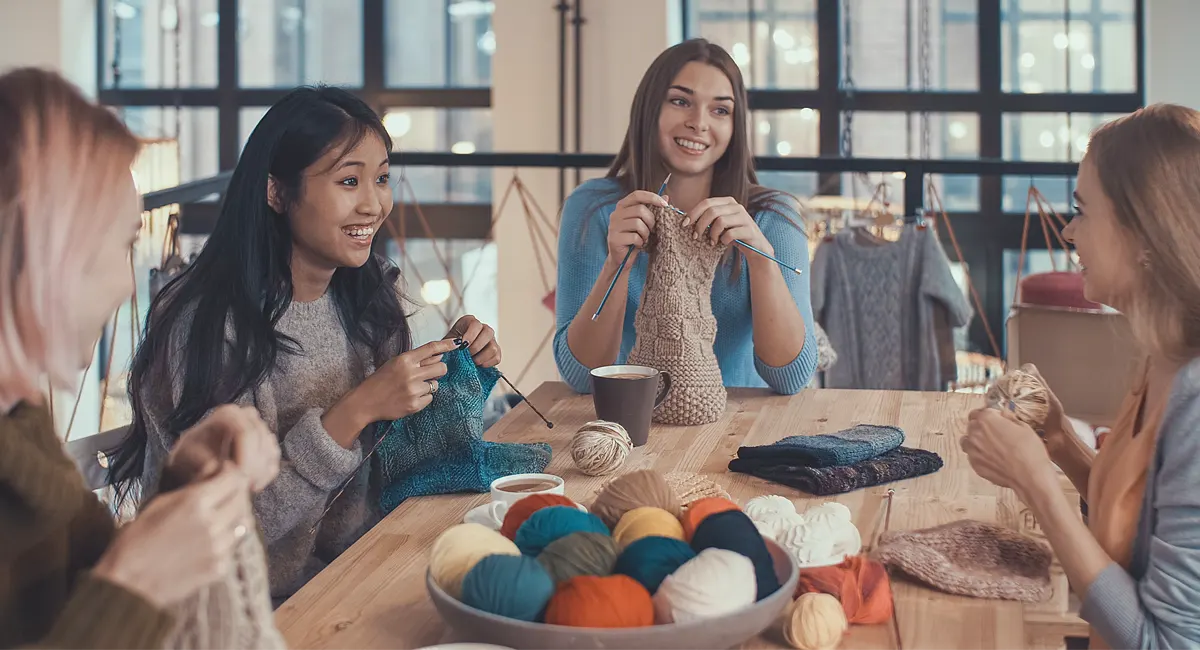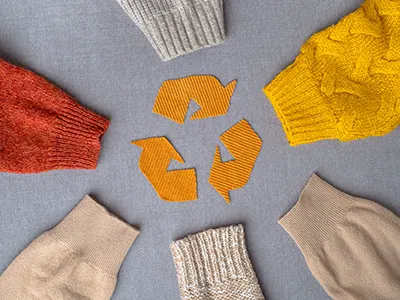Last Updated on June 14, 2023

We know, when most people think of knitting, they think of an older woman sitting in a rocking chair, wearing a shawl, knitting mittens for her grandkids. But knitting isn’t just for grandmas anymore!
Everything old is new again, and many people in their 20s and 30s have picked up knitting needles. But why? In this post, we’re going to talk about the driving factors that have contributed to a whole new generation of knitters and what it means for the ancient hobby.
Thanks For The Hobby, Pandemic
Even before the pandemic, younger knitters were discovering the hobby. This SAGE Journals article from 2014 suggests that there was an uptick in younger hobbyists going back as far as the early-2000s.

But especially during the lockdown periods, when everyone was home, younger people turned to activities to fill their time. How many people do you know who turned to baking or gardening to soothe and comfort frayed nerves at a time when none of us knew how long the pandemic would last or how bad it would get? Even people who were able to work from home looked for activities that could give them a break from their computer screens. With no commute to help them transition from work life to personal life, many people were looking for a way to disconnect from their tech. Enter hobbies!
Looking for an escape from the isolation and stress of the pandemic, a lot of people looked for ways to tune out and distract themselves from the news. While the data is still pretty new, different yarn retailers have noticed an unbelievable increase in yarn sales. One article notes that in Spain, a Madrid-based online yarn shop experienced over 200% growth in March 2020 alone.
Even Lion Brand Yarn, the 145-year-old yarn company (and a popular brand carried by Ocean State Job Lot), saw an 80% increase in yarn sales during the pandemic.
The Appeal of Knitting
But why have so many turned to knitting and other fiber crafts in the last few years instead of other hobbies?

- Knitting is sustainable: One pound of sheep’s wool can yield about 10 miles of finished yarn. Considering many sheep can produce two to 30 pounds of wool a year (depending on the breed), that’s 20 to 300 miles of yarn from just one sheep! Eco-conscious knitters buy old sweaters in thrift shops and unravel them to reuse the yarn on a new project. You can even create “yarn” from old T-shirts by ripping them into strips.

- A chance to express your unique self: Knitting, crocheting, and other activities using yarn or other fibers allow you to get creative even when using a pattern. Color choice, yarn weight, and varying price points can allow for unique, one-of-a-kind pieces that let today’s younger generation express themselves.

- A variety of fibers: You’re not just limited to wool or other animal fibers like alpaca or cashmere. Vegans and people who might be allergic to wool or other natural fibers can choose from acrylic, bamboo, and cotton, among other materials. Diversity in fibers also means a wider range of price points, making yarn accessible to more people than ever before.

- Chance for financial independence: Hand-dyeing yarn and making knitting accessories with 3D printers and laser cutting machines has also become popular with many millennials and Gen-Zers looking for both supplemental incomes and ways to escape the daily 9 to 5. A quick search for “yarn” on Etsy returns over 500,000 results.
Now that things have reopened and people are once again venturing out and about, there’s still a large portion of millennials and Gen-Zers who, instead of returning to the club, continue to prefer the comfort and calm that an evening of knitting offers. In fact, millions of younger people are continuing to trade the nightlife for the couch life, knitting needles in hand.

